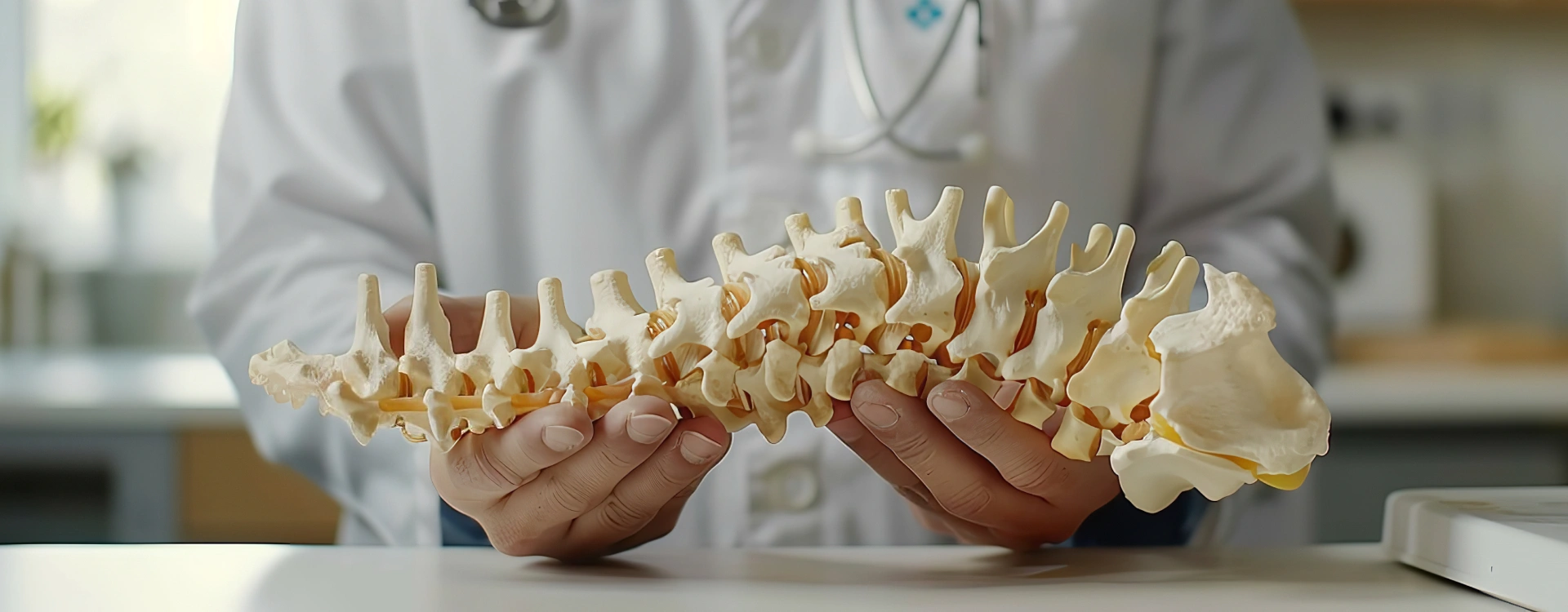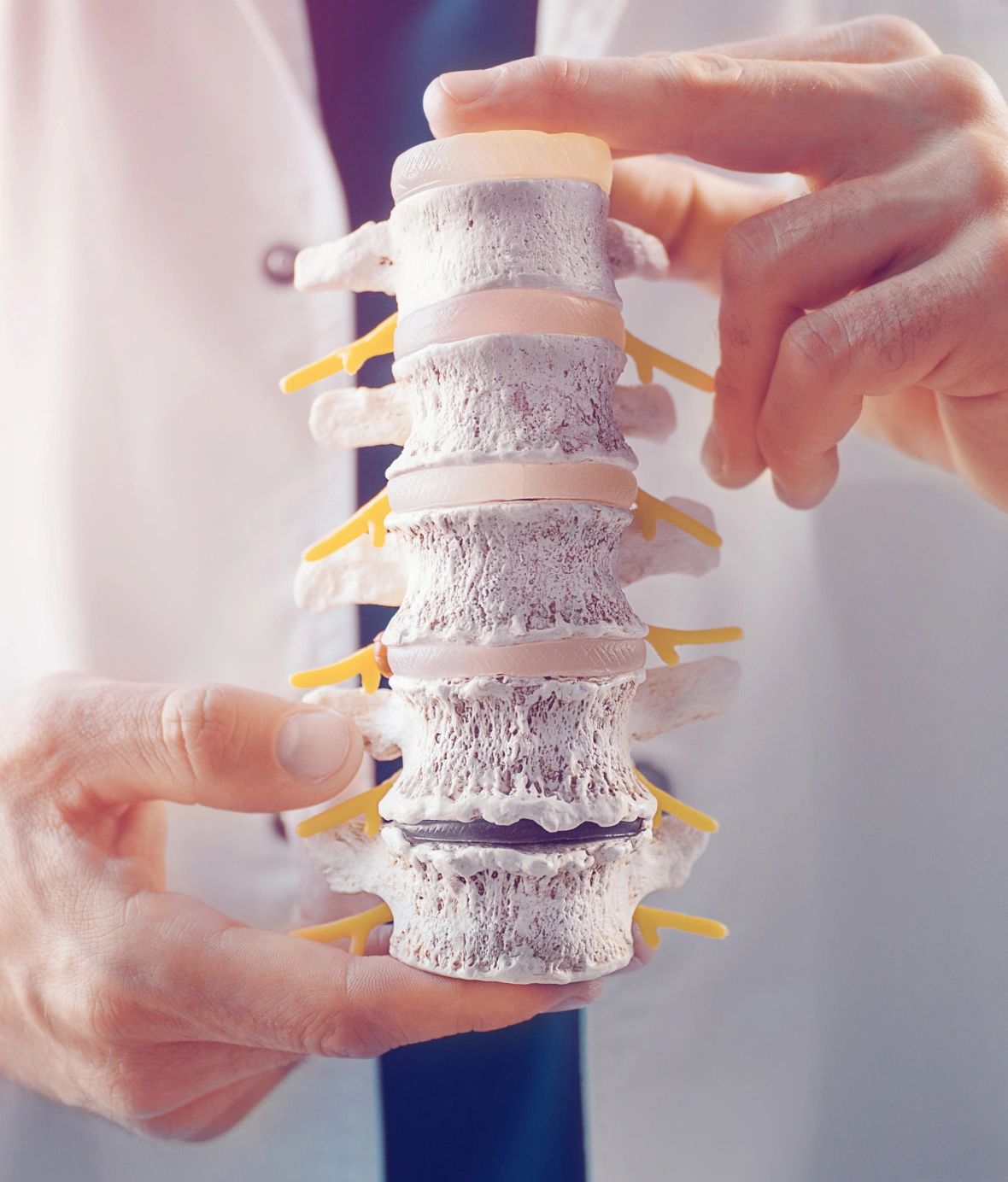Best Ankylosing Spondylitis Treatment in Gurugram

Ankylosing spondylitis (AS) is a chronic inflammatory condition that primarily affects the spine, causing stiffness, pain, and reduced mobility. Over time, it can lead to spinal fusion, postural deformities, and severe discomfort in the back, hips, and shoulders. If left untreated, AS can significantly impact daily activities and overall quality of life.
At Painflame, we offer specialized ankylosing spondylitis treatment in Gurugram, combining chiropractic care, physiotherapy, manual therapy, and rehabilitation exercises to manage pain, improve mobility, and enhance spinal health naturally.
Our treatment approach focuses on reducing inflammation, improving spinal flexibility, strengthening supporting muscles, and correcting postural imbalances to slow down the progression of AS and improve movement. Instead of relying solely on painkillers, our drug-free therapies promote long-term relief and functional restoration, allowing you to lead an active, pain-free life.
If you struggle with persistent back pain, morning stiffness, or difficulty maintaining an upright posture, visit our ankylosing spondylitis specialists in Gurugram for a customized treatment plan today!
What Causes Ankylosing Spondylitis?
Genetic & Autoimmune Factors
Ankylosing spondylitis is strongly linked to the HLA-B27 gene, which triggers an immune response causing chronic inflammation in the spine and joints, leading to stiffness, pain, and reduced mobility.
Inflammation of the Sacroiliac Joints
The earliest signs of AS often appear in the sacroiliac joints, where the spine meets the pelvis. Inflammation here leads to lower back pain, stiffness, and hip discomfort, worsening with inactivity.
Spinal Stiffness & Fusion
As AS progresses, chronic inflammation causes new bone growth, leading to spinal fusion (ankylosis), a rigid posture, reduced flexibility, and difficulty performing daily activities and movements.
Joint & Muscle Weakness
AS affects joints like the hips, shoulders, and knees, leading to pain, stiffness, and muscle weakness, impacting spinal alignment, balance, posture, and making movement more challenging.
Signs You Need Ankylosing Spondylitis Treatment
Chronic Lower Back & Hip Pain
Persistent pain and stiffness in the lower back, hips, or pelvis, especially in the morning or after periods of inactivity, may indicate AS. The pain often improves with movement but worsens with prolonged rest.
Morning Stiffness & Reduced Spinal Mobility
Difficulty bending, twisting, or standing upright due to spinal stiffness is a common AS symptom. Without treatment, it can lead to a permanently rigid spine and poor posture.
Postural Changes & Spinal Curvature
AS can cause the upper back to curve forward (kyphosis), leading to a stooped posture and difficulty looking straight ahead. Early intervention is key to preventing severe spinal deformities.
Pain Spreading to the Shoulders & Ribcage
As progresses, inflammation may spread to the shoulders, rib joints, and neck, making breathing difficult and causing chest tightness or discomfort during deep breaths.


Non-Surgical Solutions for Ankylosing Spondylitis Relief
Physiotherapy & Postural Correction
Physiotherapy helps manage AS by enhancing spinal flexibility, strengthening core muscles, and correcting posture. Targeted exercises reduce stiffness, pain, and joint strain, while improving movement, balance, and spinal alignment to slow AS progression and maintain mobility.
Chiropractic Care & Spinal Mobilization
Gentle chiropractic adjustments and spinal mobilization restore joint movement, reduce stiffness, and relieve pressure on affected areas. These techniques improve posture, alleviate nerve compression, and enhance spinal function, helping to manage AS symptoms and maintain better mobility.
Manual Therapy & Myofascial Release
Soft tissue techniques like deep tissue massage, myofascial release, and trigger point therapy relieve muscle tension, improve blood circulation, and reduce pain caused by AS. These therapies help enhance flexibility, reduce inflammation, and prevent stiffness, promoting long-term spinal health.
Strengthening & Preventing Future Spinal Issues
Managing ankylosing spondylitis requires a proactive approach to maintain spinal mobility, prevent stiffness, and reduce joint inflammation. Regular exercises, postural correction, and movement training can help slow the progression of AS.
Strengthening Core & Back Muscles
Building strong core and back muscles provides better support for the spine, reducing the risk of postural deformities and chronic pain. Exercises like planks, bridges, and resistance training improve spinal stability.
Enhancing Spinal Flexibility
Stiff joints and tight muscles limit spinal movement. Stretching, yoga, and mobility exercises help increase flexibility, improve posture, and reduce morning stiffness.
Correcting Posture & Ergonomic Adjustments
Maintaining proper posture and using ergonomic furniture can reduce strain on the spine, prevent excessive stiffness, and enhance daily movement comfort. Gait correction and movement retraining also help in preventing further complications.

Frequently Asked Questions
What are the main symptoms of ankylosing spondylitis?
Ankylosing spondylitis causes chronic lower back pain, morning stiffness, limited spinal mobility, and postural changes. It can also affect other joints like the hips, shoulders, and ribs.
When should I seek treatment for ankylosing spondylitis?
If you experience persistent back pain, stiffness lasting over three months, difficulty standing straight, or pain spreading to other joints, seek medical evaluation to manage symptoms early.
What are the best non-surgical treatments for ankylosing spondylitis?
Physiotherapy, chiropractic care, manual therapy, spinal mobilization, strengthening exercises, and postural correction help improve mobility and manage pain without surgery.
Can ankylosing spondylitis be treated without medication?
Yes, while medication helps manage inflammation, physiotherapy, movement therapy, spinal adjustments, and ergonomic corrections play a key role in reducing pain and maintaining mobility naturally.
How can I prevent ankylosing spondylitis from worsening?
Staying active, improving spinal flexibility, maintaining proper posture, and engaging in strengthening and mobility exercises can slow down the progression of AS and prevent severe spinal stiffness.

